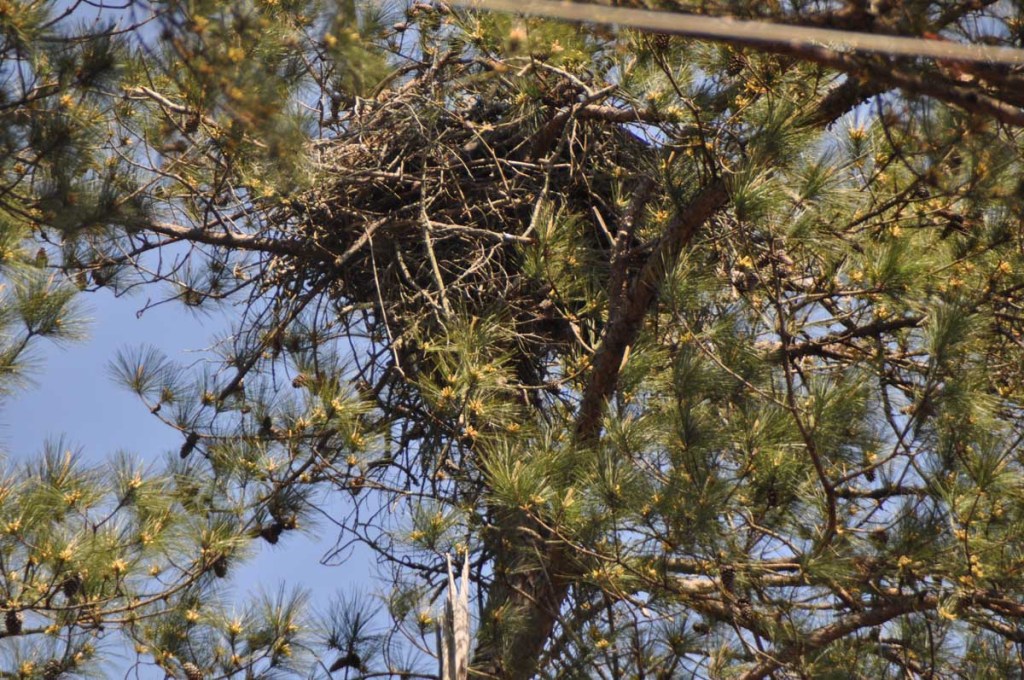Bald eagles soar over Pell City
Published 10:35 am Thursday, March 22, 2018

- Bald eagle nests are reused each year and can weigh up to 4,000 pounds. Photo by Urainah Glidewell
On the side of a busy road in Pell City, built in the branches of a tall pine tree is a very large nest.
Guarding this nest is an unlikely pair of bald eagles, each with bright white heads and tails and brown bodies, their feathers catching glints of sunlight. The female hunkers down on eggs in the nest, sheltering from the wind as the male clings to a nearby branch with long talons, keeping watch for predators and nearby meals.
Trending
He soars on the wind, heading to fish in nearby Logan Martin Lake and bring nourishment back to the protective mother.
Candy Sewell, a local Pell City woman and amateur bird-watcher, came into the office of the News-Aegis with a video to share of the eagles, something she wasn’t expecting to see in Pell City.
Sewell said she and her husband have seen many hawks and eagles, but not bald eagles in the area, especially in such an unlikely place.
“We didn’t realize they were bald eagles until we saw them in the tree,” Sewell said. “They have a large nest and the mother is sitting on it right now.”
Bald eagles, the only eagle unique to North America and symbol of the United States, were once listed on the Endangered Species List. In 1963, only 487 nesting pairs remained. They were almost extinct as a result of lost habitat, hunting, and the use of DDT, an insecticide that would cause eagles to lay thin-shelled eggs that cracked before chicks could hatch.
The Endangered Species Preservation Act of 1966 passed legislation. Laws were enacted to protect bald eagles, ban DDT, prohibit killing of eagles, protect nesting sites, and improve the water quality of lakes and rivers. As of 2009, their population is protected, healthy, and growing according to the U.S. Fish and Wildlife Service.
The bald eagle population in Alabama was almost eliminated during the 40s and 50s and a reintroduction effort began in earnest in 1984 by the Alabama Department of Conservation and Natural Resources. Between 1984 and 1991, biologists released 91 juvenile eagles in Alabama, but many nests were unsuccessful. The first successful nest was not documented until 1991. Since then, biologists have documented over 500 bald eagles hatched in the wild in the state.
In Alabama, there were 77 monitored nesting pairs of bald eagles in 2007. Currently, estimated numbers are over 100 pairs of nesting bald eagles in Alabama.
Bald eagles reuse their nests year after year. The very large nests can often weigh up to 4000 pounds. Bald eagles can live up to 30 years in the wild and have been observed to live even longer in captivity.
Bald eagles also mate for life, so the pair in Pell City may have been together for a while. The eaglets, when hatched, will not get their distinctive white head and tail until after they reach maturity at four to five years of age.
Although bald eagles are no longer listed on the Endangered Species List as of 2007, they and their nests are still protected under the Migratory Bird Treaty Act and the Bald and Golden Eagle Protection Act, which originally passed in 1940.
This pair of bald eagles, protecting their nest in a tall pine tree near a busy road in Pell City, is likely to return after their eaglets are hatched. What drew them to Pell City? Perhaps what draws many people to the area—good fishing and good food.


